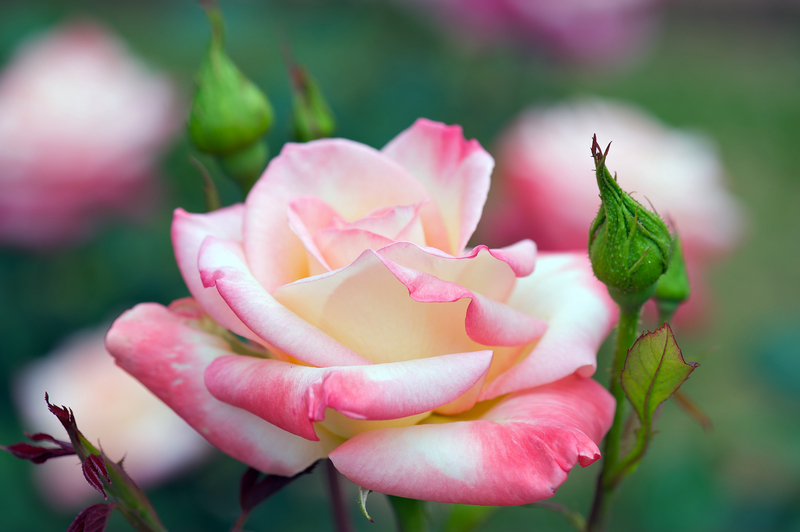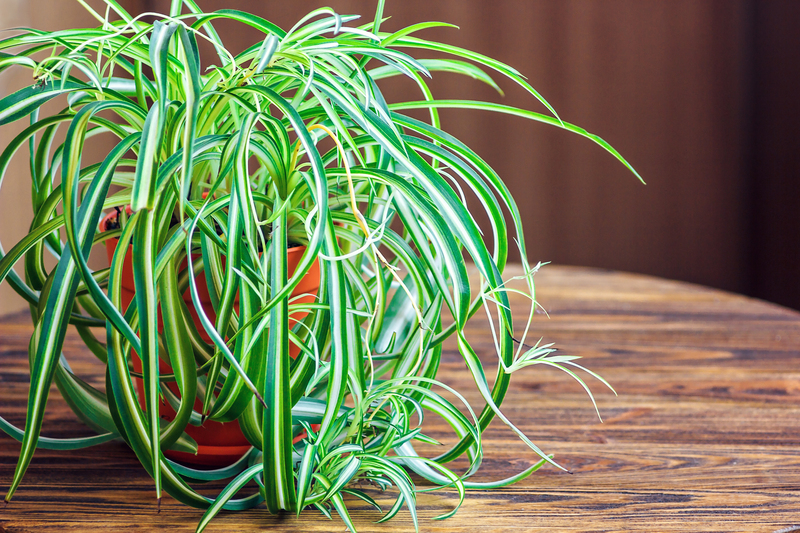How Container Gardening Revolutionizes Urban Green Spaces
Posted on 14/06/2025
How Container Gardening Revolutionizes Urban Green Spaces
Container gardening has become the go-to solution for urban dwellers eager to nurture green oases within concrete jungles. As more cities develop vertical infrastructure, traditional gardens--and the access to them--dwindle. However, thanks to creative approaches like containerized gardening, vibrant city landscapes and healthier lifestyles are well within reach. In this comprehensive article, we explore the transformative power of container gardening in modern cities, its benefits, best practices, and inspiring examples from around the globe.
The Rise of Urban Container Gardening
Urbanization brings numerous advantages--economic opportunities, cultural diversity, and convenience. Yet, it also comes with a price: diminishing access to green spaces. Enter container gardening in urban areas. This innovative practice is not just a trend, but a revolutionary method to reclaim nature in our metropolitan neighborhoods.
What Is Container Gardening?
Container gardening is the practice of growing plants exclusively in containers instead of planting them in the ground. These containers can range from traditional pots to recycled buckets and custom-built planters. The flexibility of this method allows city residents to turn balconies, rooftops, patios, and even windowsills into lush, green environments.
- Space-saving and adaptable
- Suitable for various plant types--vegetables, flowers, herbs, shrubs, even small trees
- Flexible for beginners and experienced gardeners alike

How Container Gardening Revolutionizes Urban Green Spaces
Let's dive deeper into the transformative impacts of container gardening in city environments, both on a personal and community scale.
1. Maximizing Limited Spaces
One of the most significant advantages of containerized gardening in cities is its ability to make the most of cramped or unconventional areas. With containers, virtually any small, unused spot can become a productive green corner.
- Vertical gardening: Stackable, hanging, or wall-mounted containers create living green walls
- Balconies and rooftops: Hard-to-use spaces become food- or flower-producing zones
- Shared community areas: Containers allow communal gardens in apartment courtyards or public spaces
Urban container gardening isn't limited by soil quality or ground availability--this makes it a true game-changer for dense metropolitan regions with little to no arable land.
2. Enhancing Urban Biodiversity
By introducing various plants--succulents, herbs, edible vegetables, and native flowers--urban container gardens help restore regional flora and fauna. They attract pollinators like bees, butterflies, and birds, fostering healthier urban ecosystems.
Key benefits for biodiversity include:
- Providing habitats for pollinators and beneficial insects
- Supporting locally adapted plant varieties
- Contributing to urban food chains and ecological balance
3. Improving Air Quality and Microclimate
Plants absorb pollutants, filter particulates, and release oxygen, playing a vital role in improving city air quality. Although a single plant has modest effects, the cumulative impact of container gardening on urban air can be substantial when practiced citywide.
- Reduces urban heat islands by providing shade and transpiration-based cooling
- Lowers ambient temperatures on rooftops and balconies
- Improves microclimates around homes and communal areas
4. Empowering Urban Dwellers
One of the less-discussed but profound effects of container gardens in urban communities is how they empower residents. Gardening provides a deep sense of connection, purpose, and accomplishment.
- *Boosts mental health and reduces stress*
- Enhances food security by enabling homegrown vegetables and herbs
- Encourages social interaction when practiced in shared spaces
5. Fully Customizable Solutions
Unlike in-ground gardens, container gardening for city dwellers is highly customizable. You can alter the size, material, aesthetics, and purpose of your setup to match your goals, climate, and available space. From drought-tolerant cactus displays for sunny balconies to lush vertical herb gardens for kitchen use--options are endless.
Best Plants for Urban Container Gardening
When starting your container gardening journey in urban spaces, choosing the right plants is crucial. Here are popular choices that thrive in these conditions:
- Herbs: Basil, parsley, cilantro, chives, thyme, oregano
- Leafy greens: Lettuce, spinach, kale, arugula
- Fruiting plants: Tomatoes, peppers, strawberries, dwarf citrus trees
- Ornamental flowers: Marigolds, petunias, pansies, nasturtiums
- Succulents & cacti: Perfect for low-maintenance decor and hot, sunny spots
Choose plant varieties that match your sunlight availability, climate, and skill level.
Implementing Your Urban Container Garden: Step-by-Step Guide
Setting up a successful city container garden does not require vast knowledge--just a willingness to experiment and adapt. Here's a step-by-step guide to get you started:
Step 1: Assess Your Space
- Identify potential areas: balconies, window sills, rooftops, patios
- Check sunlight exposure and wind patterns
Step 2: Choose Suitable Containers
- Use pots, planters, buckets, or recycled materials (ensure adequate drainage)
- Opt for larger containers for root vegetables or larger plants
- Consider lightweight but durable materials for rooftops or hanging gardens
Step 3: Select the Right Soil
- Use well-draining potting mix--not garden soil--designed for container gardening
- Amend with organic compost, coconut coir, or vermiculite for added nutrients and aeration
Step 4: Pick Your Plants
- Start with easy-to-grow herbs or flowers for beginners
- Group plants with similar sun and water requirements together
Step 5: Care, Maintenance, and Watering
- Fertilize according to plant needs (organic fertilizers are ideal)
- Keep soil moist but not waterlogged--containers dry out faster than in-ground beds
- Regularly check for pests and diseases
- Rotate crops seasonally for continuous harvest and healthy soil
The Social Impact of Container Gardening in Urban Areas
Container gardening is more than just an individual hobby--it has significant social and community effects:
- Educational Value: Schools and community centers use container gardens to teach children about botany, nutrition, and environmental stewardship.
- Community Cohesion: Communal container gardens encourage socializing, sharing resources, and collective improvement of shared spaces.
- Local Food Movement: By growing herbs, fruits, and vegetables in containers, urbanites can join the urban agriculture movement, reducing reliance on supermarkets and supporting local food systems.
Environmental Benefits Beyond the Balcony
The environmental advantages of container gardening for urban landscapes are many:
Reducing Urban Runoff
Container gardens can absorb rainwater and reduce stormwater runoff, helping cities manage flooding and protect waterways. Strategic placement of planters on balconies or rooftops can capture rainfall that would otherwise be lost.
Mitigating Pollution
Certain plants grown in containers (such as spider plants or peace lilies) are known for their air-purifying qualities, capable of absorbing urban pollutants including VOCs (volatile organic compounds) and particulate matter.
Supporting Urban Wildlife
Birds, butterflies, and pollinators benefit from the pockets of green that container gardens provide, especially when native flower species are used. These gardens act as stepping stones, forming vital corridors for urban biodiversity.
Challenges and Solutions in Urban Container Gardening
Revolutionizing urban green spaces with container gardening isn't without difficulties. Here's how to address common hurdles:
- Watering woes: Urban environments, especially on rooftops, lead to quick evaporation. Solution: Use self-watering planters, mulch, and water-retentive soil mixes.
- Limited sunlight: Tall buildings often block the sun. Solution: Choose shade-tolerant plants or move containers to sunnier spots regularly.
- Weight restrictions: Rooftop and balcony gardens must consider structural limits. Solution: Opt for lightweight containers and potting mixes.
- Civic regulations: Some cities have rules about rooftop or facade gardens. Solution: Check local codes before extensive gardening projects.
- Pests and pollution: Urban air and pests can affect plant health. Solution: Use organic pest management and select hardy, pollution-tolerant varieties.
Inspiring Urban Container Gardening Initiatives
Around the world, cities are embracing container gardening solutions with remarkable outcomes:
Singapore's "Gardening in the City" Initiative
Singaporeans have made container gardens part of their famed "City in a Garden" vision. Through partnerships, the National Parks Board distributes free planters and seeds, leading to hundreds of community rooftop and balcony gardens.
New York's High Line
While primarily a landscape design marvel, the High Line inspires residents to use native and adaptive plants in creative container arrangements, transforming abandoned spaces into thriving urban greenways.
London's Edible Bus Stops
Londoners have turned numerous bus stops into small containerized edible gardens, engaging the public and beautifying unexpected locations.

Future Outlook: Container Gardening and the Urban Green Revolution
As city populations continue to rise and green space becomes increasingly precious, container gardening is poised to play a pivotal role in resilient urban landscapes. New technologies and materials--such as smart irrigation, recycled-plastic containers, and automated pest control--make it easier and more accessible than ever.
What awaits us in the future?
- Widespread integration of container gardens on high-rise balconies and public rooftops
- Inclusion of container-based green infrastructure in urban planning policies
- Potential for hydroponics, aquaponics, and vertical farming in portable systems
- Smart gardening apps for maintenance reminders and community sharing
Conclusion: Why Container Gardening Matters for Urban Green Spaces
Container gardening has truly revolutionized the way we can create, maintain, and expand green spaces in cities. It's accessible, adaptable, and has far-reaching ecological, social, and psychological benefits. Whether on a tiny apartment balcony or a massive shared rooftop, every urban container garden brings us closer to a sustainable, healthier, and more beautiful city life. Start today, and become part of the urban green revolution--one container at a time.
Ready to transform your urban space? Grab a container, some soil, and a favorite plant. The city is yours to green!

